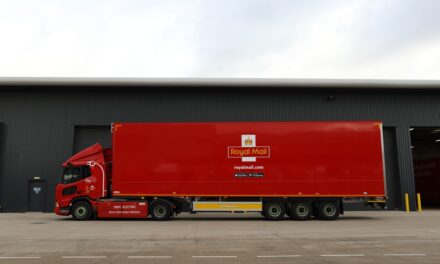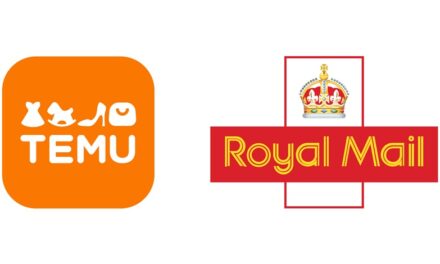
Mail market liberalisation in the UK – a global model?
Why the UK is interesting
There continues to be a great deal of interest worldwide in what is happening in the UK mail market, which has been fully opened to competition since the beginning of 2006.
Why should this be? After all, the UK is not the first important mail market to be headlined as fully liberalised. Both New Zealand and Sweden provide good examples of how open competition has been impacting for a number of years on mature mail markets in developed countries.
That said, it is not difficult to understand why so much interest is focused on the UK. It is one of the top five global economies and has one of the world’s biggest mail volumes. The incumbent post, Royal Mail, for all its ups and downs still has an almost iconic status in the postal world. And there is good knockabout comedy as the regulator, Postcomm, attacks Royal Mail; Royal Mail threatens the regulator; and the independent consumer watchdog, Postwatch, denounces them both.
A market that is easy to enter
There is no doubt that in the UK the addressed mail market has, both legally and in actuality, fully opened up to competition well ahead of other major European markets. Other than the not particularly onerous requirement to apply to the regulator for a licence, anyone can compete in any segment or sector of the mail market.
Royal Mail, as the incumbent, remains the only player with a Universal Service Obligation. It is not given any favourable treatment in return, nor are the other operators required to pay any levy or in other ways support the USO. As the dominant operator, Royal Mail faces the usual constraints requiring transparent and equitable pricing: the competitors, all with low market shares, have no such limitations.
Royal Mail still has a few advantages!
Many would argue the USO is indeed the biggest advantage of all. Only Royal Mail has the resources to deliver to every address six days a week virtually everywhere in the country. Following major efforts over the last few years, its end-to-end service levels are at historic highs. It has a powerful brand. The absolute level of mail prices is at or below the European average, and a bargain compared to Germany!
There is one other advantage which its competitors continually raise, and that is Royal Mail’s exemption from charging Value Added Tax (VAT) for its services, whilst all its competitors are required to charge this tax.
For those not familiar with VAT, it is essentially a sales tax. Most companies in the UK can re-claim the tax within their value chains. However, financial institutions and charities, for instance, are, like Royal Mail, VAT exempt. This means that, if they are charged VAT by a supplier, they have no means of re-claiming it further down the chain. There is therefore a real additional cost to them of using a competitor to Royal Mail – this may be as much as 17.5% (the current applicable VAT rate). Since financial institutions, in particular, are by far the largest generators of both transactional and direct mail, the VAT issue undoubtedly makes life harder for the opposition.
We’ll come back to the VAT issue a little later in this article.
Competition models
Full end-to-end competition to Royal Mail is still quite limited. Although some of the global operators talk bravely about competing head to head over time, the reality is that end-to-end players are looking for niches.
The niche is usually some combination of product type and geography. The geography is fairly predictable, namely city business districts or where there are concentrations of business addresses, with consumer addresses still being delivered by Royal Mail. DHL Global Mail is actively pursuing this approach in the UK, and TNT indicates it will do likewise. Some licence holders, such as Citipost, are only interested in business addresses in defined niche sectors such as business magazines and financial research material, whilst SMS has found a product niche in delivery of credit cards to ‘high risk’ addresses.
The predominant competitive business model is downstream access where mail in bulk is injected by competitors into the Royal Mail operational pipeline, typically at the inward mail centre, with Royal Mail carrying out the final delivery. Readers from North America will recognise downstream access as drop shipping, which has been promoted by USPS for upwards of two decades.
The advantage for a competitor is that it is relatively low risk, and simple. The product is offered to large generators of mail, and therefore the operational procedures for the competitor are about moving mail in bulk – in consignments, cages or pallets – rather than as individual items.
Royal Mail still has the challenge of disaggregating those consignments into individual letters for final delivery.
The whole process looks a bit like moving parcels, and, as a result, a large proportion of the licence holders have parcels and express as their main business The most notable example is UK Mail, part of Business Post.
Customer benefits
Why would a customer switch to downstream access if Royal Mail is still doing the tricky and most important bit – actually delivering the letters?
He can certainly get a lower overall price. The alternatives will also probably offer a better and more predictable service for second class mail. Mailsort 2 via Royal Mail is two / three days from collection to delivery with a tail; competitors offer a two day service on the basis that once they have handed over the mail to Royal Mail for final delivery, the contract with Royal Mail stipulates the latter will deliver next day. The customer will probably also get more responsive account management and invoicing.
What about VAT, you may be asking? In practice, what seems to be happening is that the big VAT-exempt generators of mail are entering into downstream access agreements directly with Royal Mail, and only sub-contracting the front end of the process (collection, linehaul and handover) to Royal Mail’s competitors. So they are paying VAT on only a few pence rather than the whole mailing cost. Not great news for the competition, since they lose the opportunity to take over a direct relationship between Royal Mail and major customers.
Consolidation
These big generators of mail provide the base volumes to prime the competitors’ pipelines, but the margins will come from smaller customers. These are the ones who are currently paying Royal Mail much closer to full prices for their mail, since they do not generate sufficient volumes to qualify for pre-sort discounts.
The stage is set for the real change resulting from full liberalisation at the beginning of 2006, namely consolidation. As in the US, the opportunity now exists for pre-sort companies to offer to merge mail from different customers and then to carry out downstream access. Since sortation requires investment in specialist machinery, it is a riskier investment model than offering downstream access to large customers who carry out the pre-sort themselves. But the potential rewards are much greater.
Will all this activity grow the overall mail market, or is the same volume of mail going to be fought over by Royal Mail and its competitors? The jury is still out on that one!
Conclusions
There is no doubt that significant volumes of mail are moving to the downstream access model: probably at least 10%, rapidly moving to 20%, of total UK addressed volumes (something like 16m items per day). End to end switch is, as we have seen, still small.
I think we can draw the following conclusions from the UK experience to date:
– Royal Mail has a unique delivery capability that, combined with the kudos of the Universal Service Obligation, looks currently impregnable to competition. The caveat is that quality and security are maintained, and that a competitor (as yet unsighted) does not come up with a totally different service model.
– Even where competitors find niches in which to offer limited end-to-end capability, their customer offering is likely to be incomplete without using Royal Mail as a partner.
– Offering mail services upstream of delivery is relatively easy, and can generate large volumes very quickly, but margin development depends on consolidation.
– Royal Mail should charge VAT. Arguably this would allow it to make more sensible commercial decisions on its own activities, such as increasing outsourcing. Interestingly, as I complete this article, I see that the EC has launched a review of VAT exemption in the UK and Germany.
A recent Triangle study estimates that around three quarters of USPS volumes are now pre-sorted. Given that is the case, perhaps the USA with years of experience of downstream access and consolidation (albeit under different names) is a better global model than the UK for studying liberalisation in practice!










![Citizens Advice: We continue to see millions of people chasing lost parcels [and] having their accessibility needs ignored](https://postandparcel.info/wp-content/uploads/2020/12/parcels-440x264.jpg)

